DKW 75 cc Hobby scooter
With Phil Aynsley
In the 1930s DKW was the largest motorcycle manufacturer in the world, with over 20,000 employees. It had been a fast rise since its founding in Zschopau, Germany in 1916 by Danish engineer Jørgen Rasmussen.
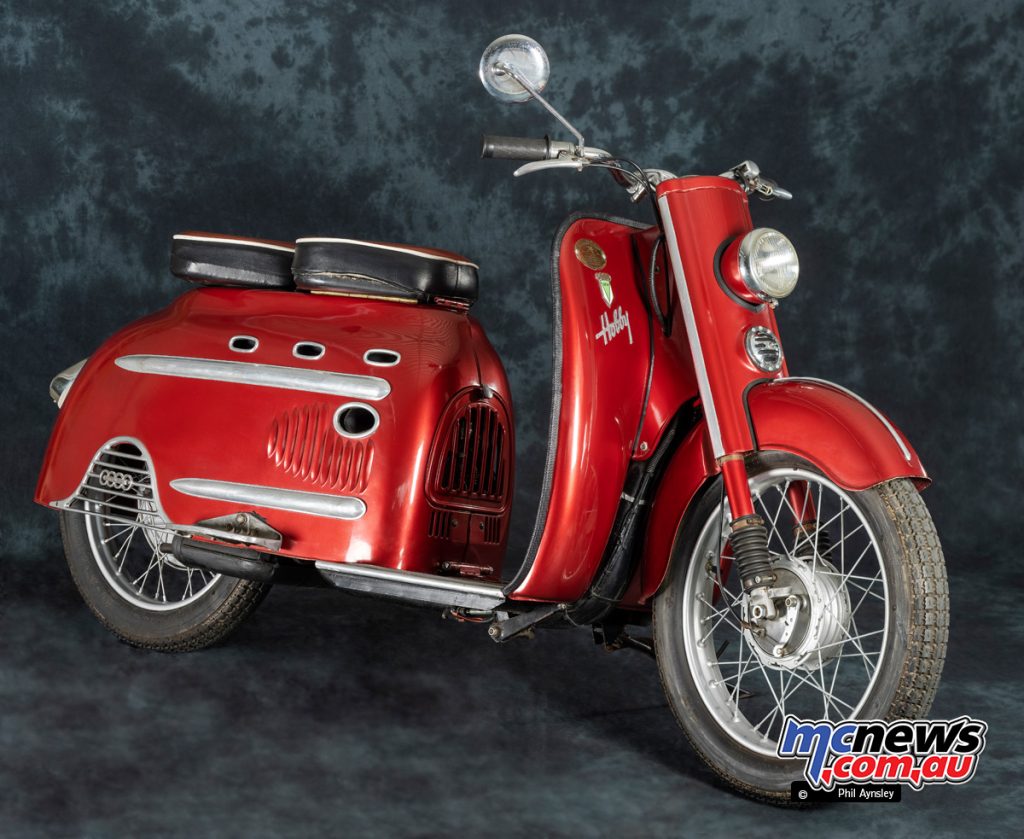
Rasmussen originally produced steam fittings before turning his hand to a steam powered car which he named the company after (Damf Kraft Wagen – “steam motor vehicle”).
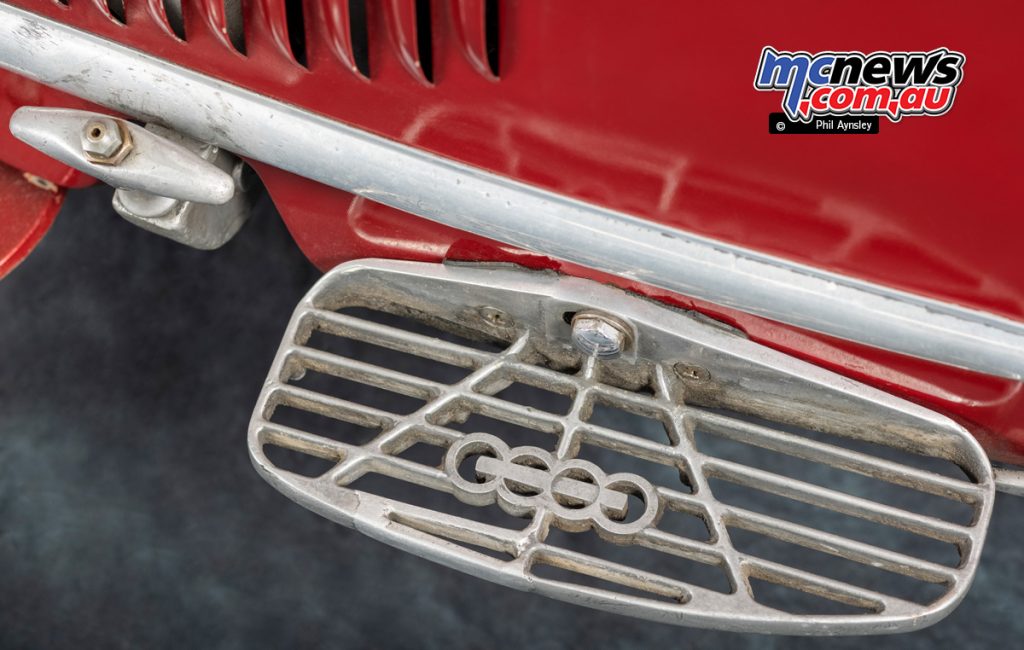
Their first complete motorcycle, a 142 cc 2-stroke, appeared in 1922. By 1928 Rasmussen was doing so well that he purchased a controlling share of the small car manufacturer Audi Work AG.
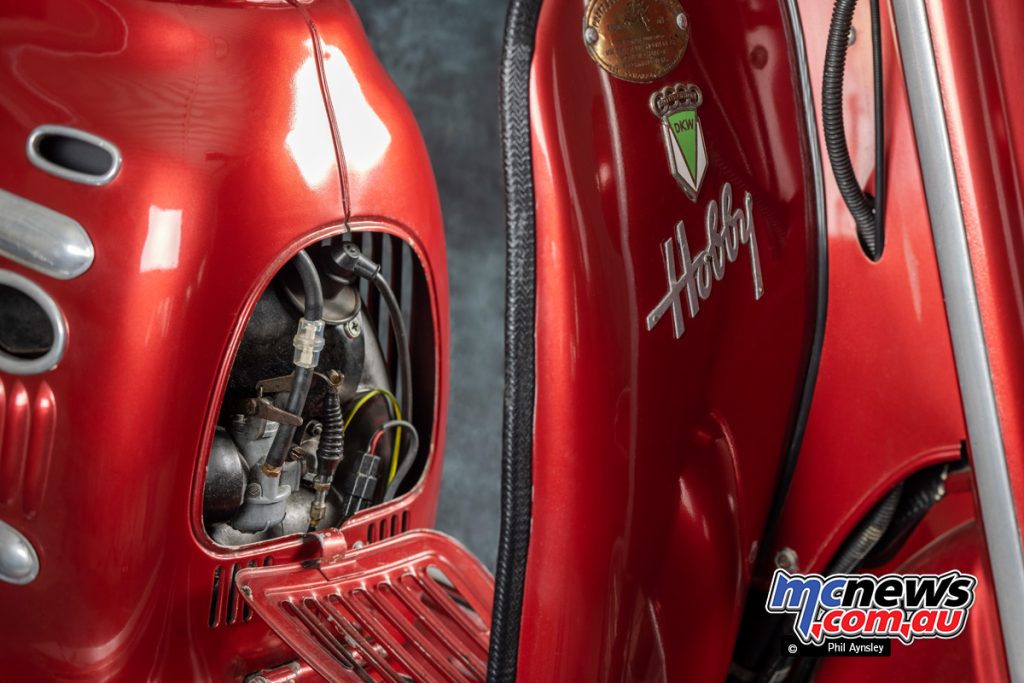
DKW continued to concentrate on 2-stroke motors for both bikes and cars (including forced-induction V4s fitted to some car models in the 1930s).
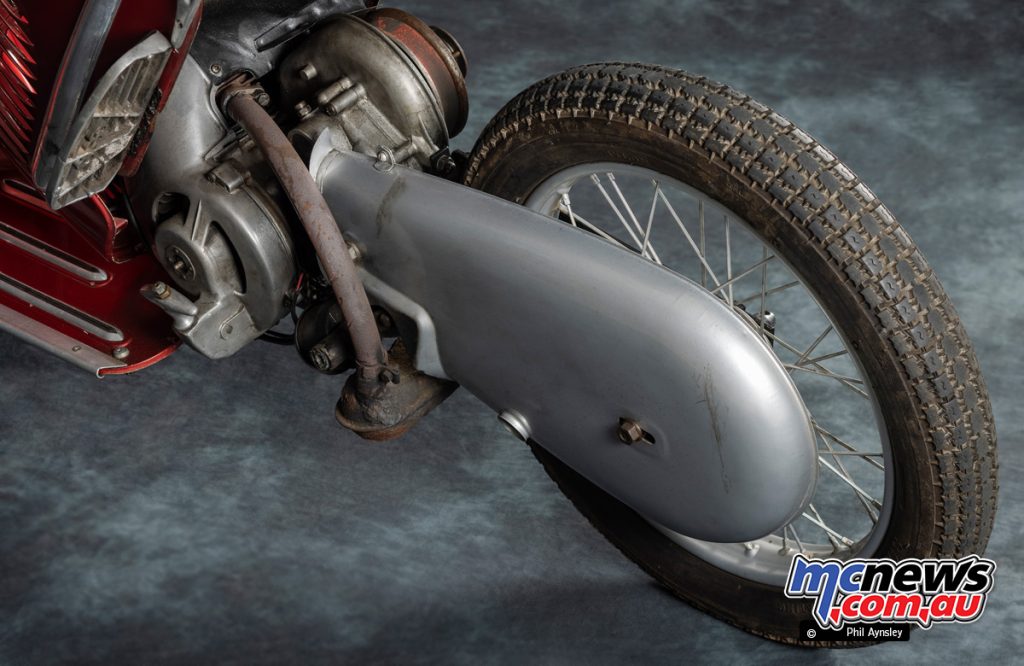
In 1932 the Great Depression forced the merging of DKW, Audi, Horch and Wanderer into the Auto Union company (the four-ring logo of which is still used by Audi today).

After WWII the original factory in Zschopau became the MZ works and the design of the company’s RT125 was given to the UK and US as war reparations where it became the BSA Bantam and H-D Hummer.
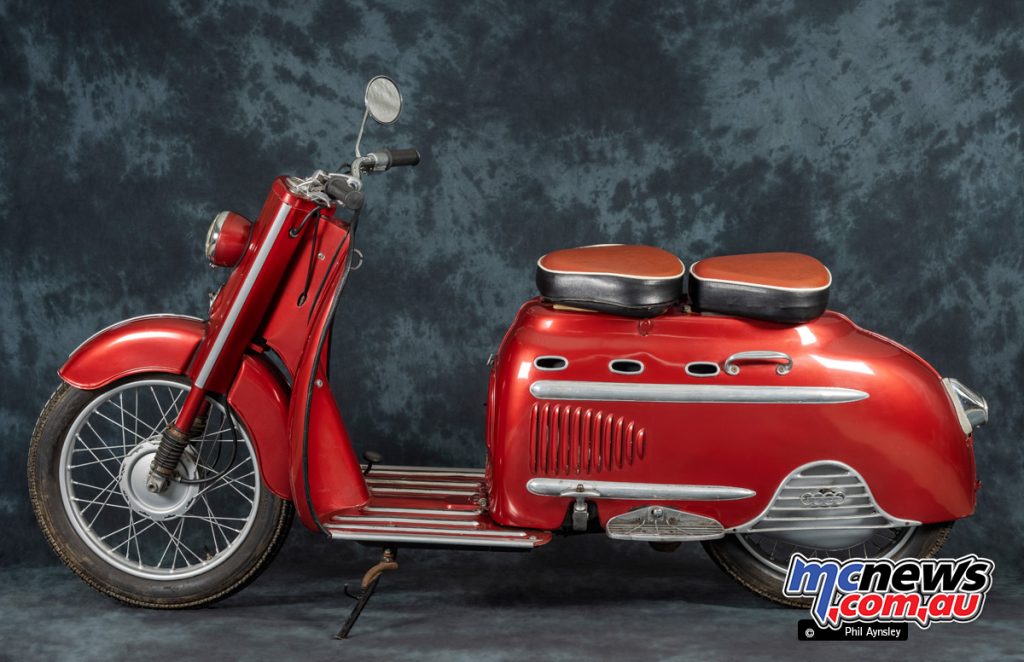
DKW continued production of both cars and motorcycles in Ingolstadt and 48,000 bikes were made in 1955 alone.
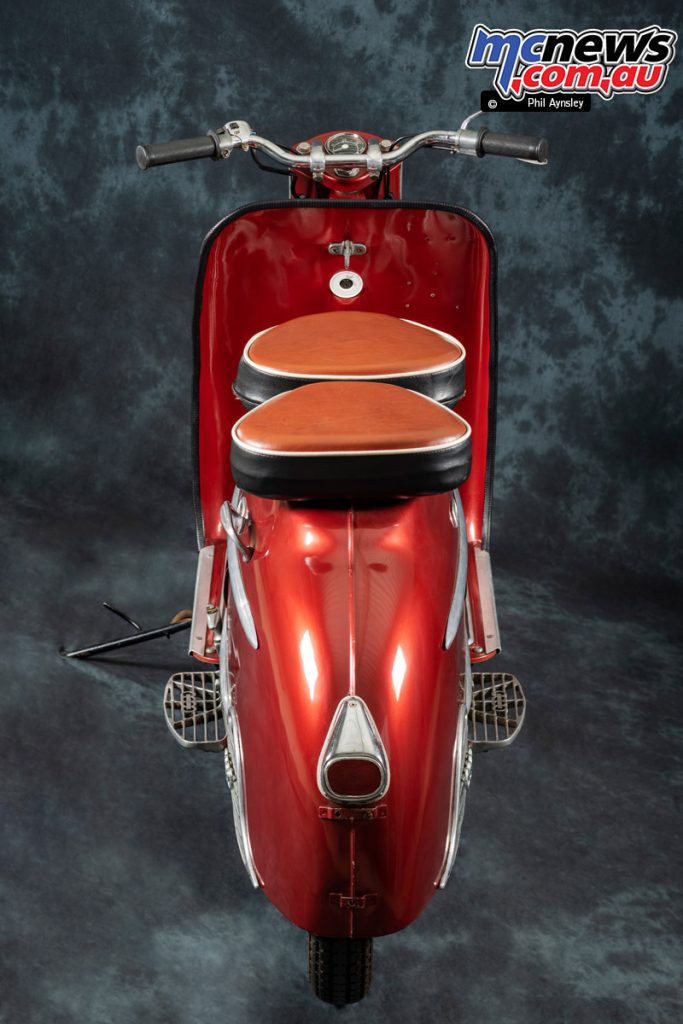
However the boom times were over by 1958 and DKW merged with Victoria and Express to form the Zweirad (Two Wheel) Union.

In 1966 the ZU was bought by Fichel&Sachs with bikes made after that time bearing either the DKW or Hercules name.
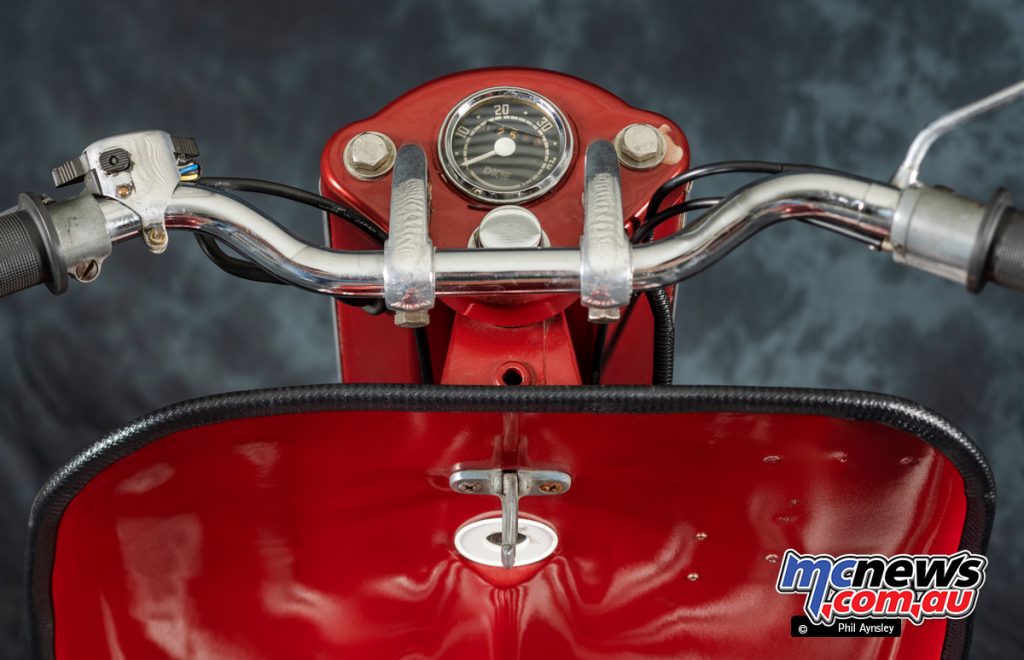
One very popular model from DKW’s post war boom era was the Hobby scooter. Introduced in 1954 some 44,000 were built until 1957.
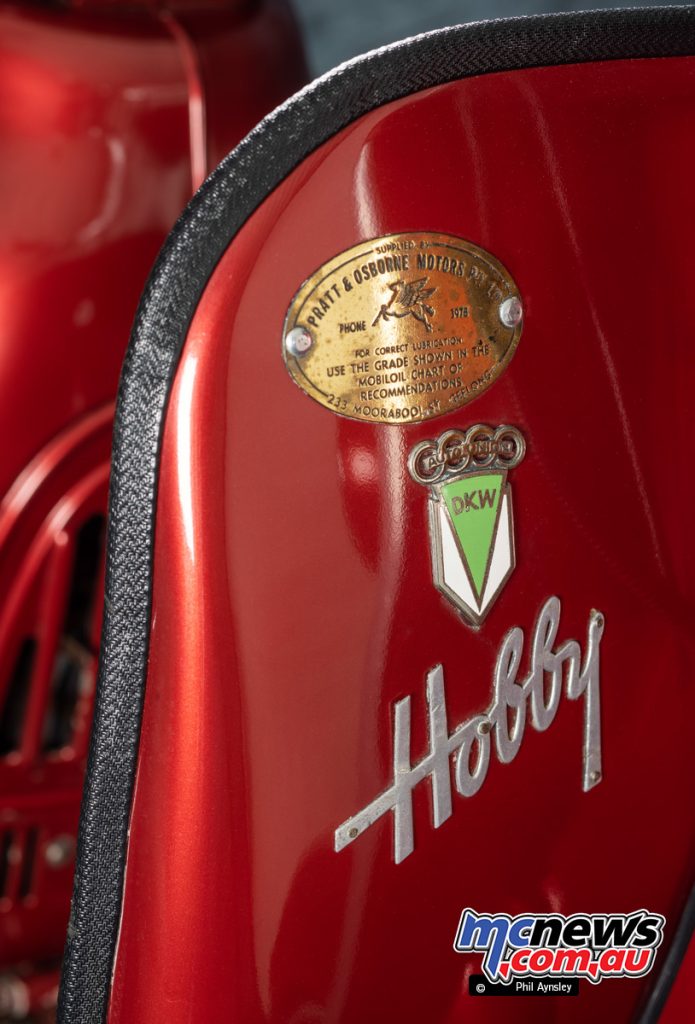
The tooling was then sold to Manurhin in France who continued to produce it with several changes, notably an automatic clutch. In 1960 the scooter’s name was changed to the Concorde but production ceased in 1962.
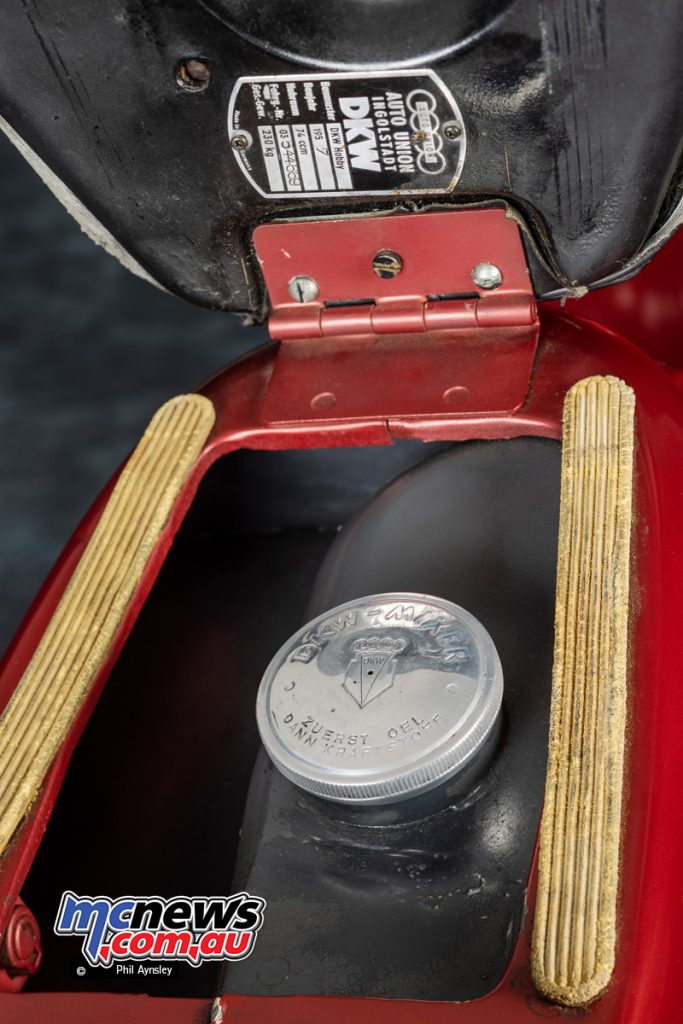
The Hobby seen here is from the final (’57) year of production and unusually for the time it employs wire spoked, rather than solid rims and a telescopic front suspension. DKW claimed it to be “the only two-wheeled vehicle fitted with an infinitely variable automatic gearbox”.
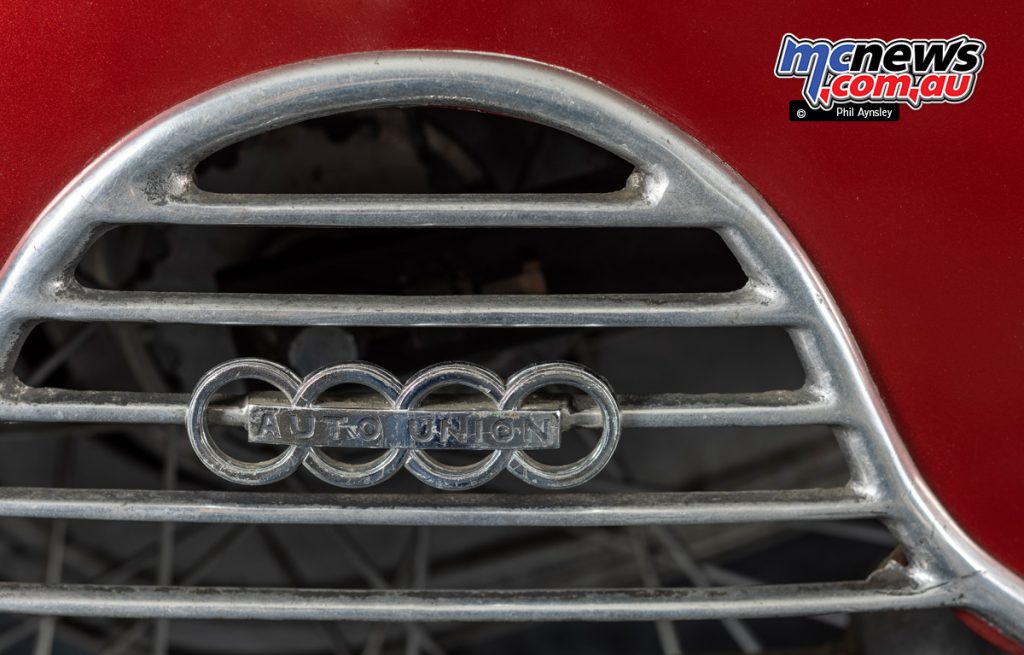
A manual clutch was used however to enable the motor to idle as if in neutral, via a latch on the hand grip. Other features included a pull-cord starter and fully enclosed chain final drive.
A Bing 14 mm carburettor fed the 75 cc 2-stroke motor which produced 3 hp at 5000 rpm, which enabled a top speed of 64 km/h.
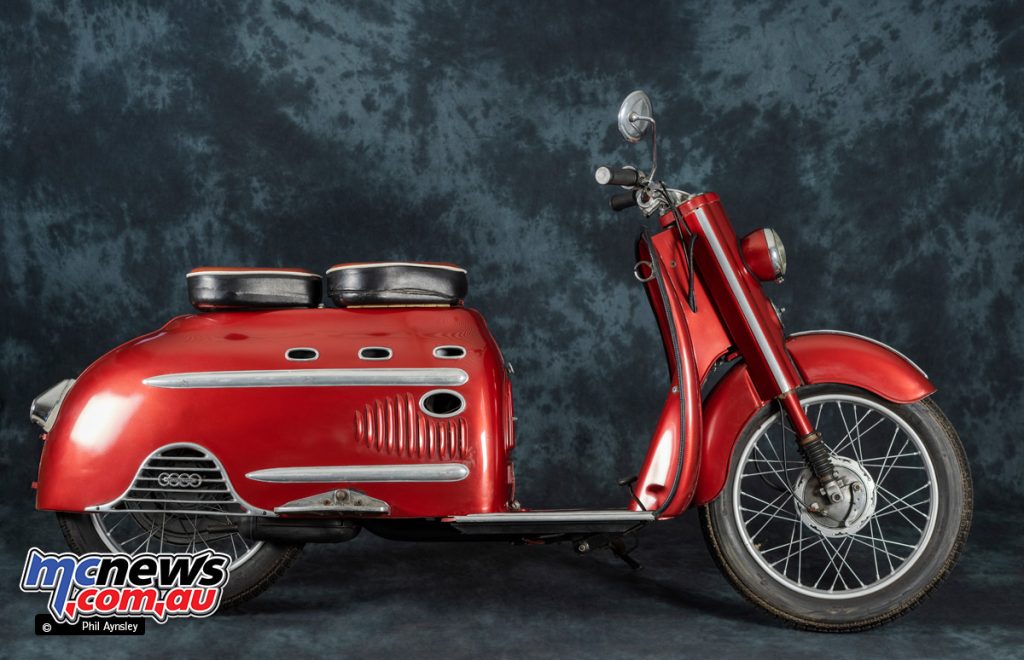
This particular scooter was sold by Pratt & Osborne’s Geelong dealership and spent most go its life working on the Geelong docks.























